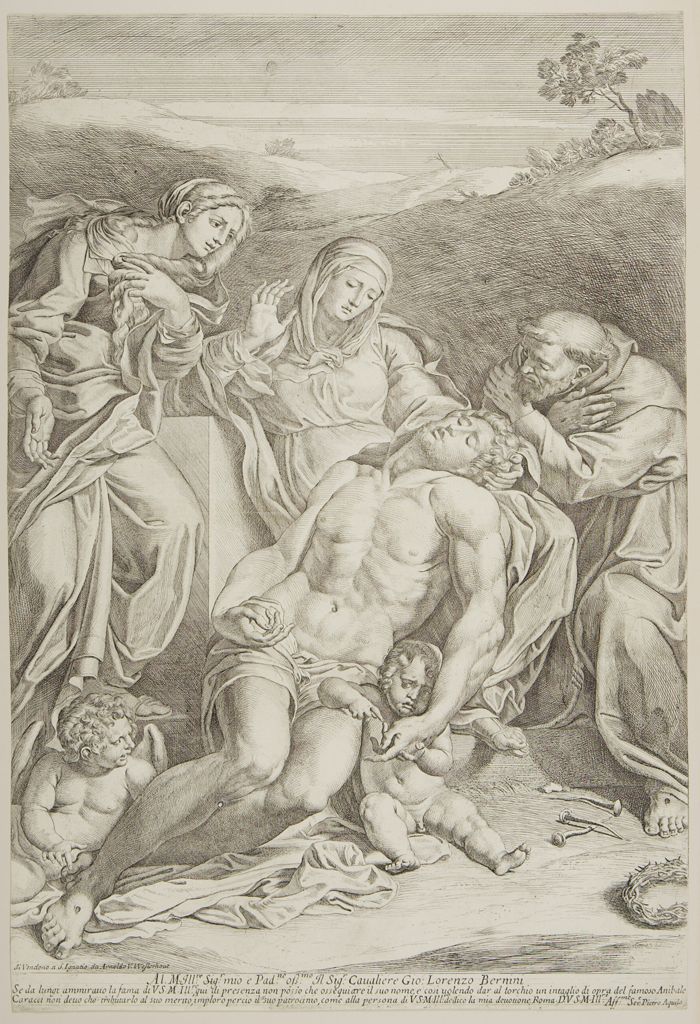пьетро аквила (1630 - 1692)

Pietro Aquila was an Italian painter and printmaker of the Baroque period. He was born in Palermo. He mentored his nephew, the printmaker Francesco Faraone Aquila. He trained at the school of Palermo painter and engraver Pietro del Po and worked, like a teacher, first at home, in Palermo, then in Naples and Rome, where he pursued the ecclesiastical career. For his paintings that he left in Palermo in the church of the Pietà (Parabola del Figlio Prodigo, Abraham and Melchizede) and in the cloister of S. Maria delle Vergini (S. Benedetto), as well as some frescoes in the Chapel of the Rosary in S. Cita, he gained the status of "respectable painter", loyal to the Raphaelesque tradition. But Aquila established himself first and foremost as a copper engraver, dedicating himself to the distribution and popularization of many of the most remarkable paintings with the help of which the sacred and profane buildings of Rome were adorned at that time. He made engravings after the works of different artists that were dear to him including: Raphael before any other, and then Annibale Carracci, Pietro da Cortona, Giovanni Lanfranco, Lazzaro Baldi, Ciro Ferri, Morandi, Franceschini, and finally Carlo Maratta, who was bound to him by a close friendship.


Pietro Aquila was an Italian painter and printmaker of the Baroque period. He was born in Palermo. He mentored his nephew, the printmaker Francesco Faraone Aquila. He trained at the school of Palermo painter and engraver Pietro del Po and worked, like a teacher, first at home, in Palermo, then in Naples and Rome, where he pursued the ecclesiastical career. For his paintings that he left in Palermo in the church of the Pietà (Parabola del Figlio Prodigo, Abraham and Melchizede) and in the cloister of S. Maria delle Vergini (S. Benedetto), as well as some frescoes in the Chapel of the Rosary in S. Cita, he gained the status of "respectable painter", loyal to the Raphaelesque tradition. But Aquila established himself first and foremost as a copper engraver, dedicating himself to the distribution and popularization of many of the most remarkable paintings with the help of which the sacred and profane buildings of Rome were adorned at that time. He made engravings after the works of different artists that were dear to him including: Raphael before any other, and then Annibale Carracci, Pietro da Cortona, Giovanni Lanfranco, Lazzaro Baldi, Ciro Ferri, Morandi, Franceschini, and finally Carlo Maratta, who was bound to him by a close friendship.




